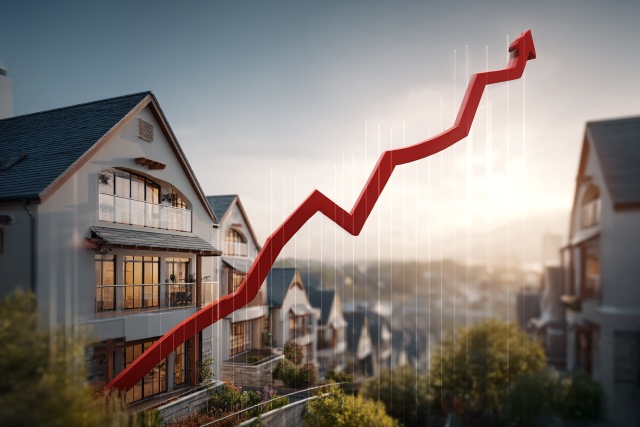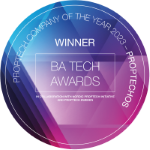It’s simple business logic that we want our commercial assets to increase in worth over time. As our towns and cities evolve and land values fluctuate, the most successful portfolios can generate a return on investment (ROI) for the business and demonstrate value to its investors. Timing is everything, and external factors such as market economics and international politics often affect the likelihood of solid returns.
Commercial real estate (CRE) is changing against this backdrop. The COVID-19 pandemic and subsequent inflation surge in the wake of Russia’s invasion of Ukraine has led to much market uncertainty over the last 3-5 years. But it’s not just market factors that are transforming CRE.
The sector needs to go further than before to demonstrate its long-term sustainability. As urbanization accelerates and the built environment’s carbon footprint accelerates in the face of rapid development, so do sweeping regulations that necessitate building decarbonization. The EU’s Energy Performance of Buildings Directive (EPBD) and America’s Energy Act 2020 have transformed the sector and incentivized energy-efficient properties in their respective markets.
Proptech has a major role in assisting CRE businesses in achieving their decarbonization goals, complying with existing and future sustainability regulations, and improving their market value. This article explores how smart buildings are delivering returns on investment in this competitive and sustainability-led market.
Measuring the financial impact of smart building technologies
Naturally, CRE businesses still see environmental benchmarking as the ultimate method in demonstrating their long-term commitment to sustainability and building performance. Ownership of LEED or BREEAM standard properties demonstrates this to investors and is considered advantageous for tenants who equally wish to lease energy-efficient commercial property.
Overall, LEED-certified buildings can increase rents by over a third (37%) in major US cities. In addition, research by Knight Frank shows that properties with a BREEAM Outstanding rating can earn a 12% rental premium in significant markets such as London.
Strategic Proptech implementation for maximum value creation
While this may seem straightforward as an aspiration, CRE firms face a more complex reality. A multitude of factors are considered in green building certification, and a more strategic approach is often required to consistently hit the high standards set by organizations like the US Green Building Council and the Building Research Establishment.
Without spending a penny on building hardware, proptech solutions can address much of the low-hanging fruit with building optimization. Maximizing operational efficiency within existing portfolios and legacy infrastructure can often be a great place to start, utilizing building management system (BMS) data to understand energy flows and how to get the best out of your configuration, saving more than a third (36%) on energy costs.
Timing technology investments with market cycles and tenant demands
For larger CRE firms with the budget and portfolio to invest in more extensive sustainability overhauls, from commercial building HVAC retrofits that maximize energy efficiency to adopting geothermal energy or renewable storage. There are limitless possibilities as to what can be achieved with modern building hardware and software.
However, implementing these solutions in a volatile and commercially competitive market is often challenging for CRE businesses, which face increasing pressure to decarbonize building stock and financial pressure to justify the overheads of smart building investments.
Understanding CRE market cycles and where proptech investment can be leveraged to deliver maximum benefits can be a great way to stay competitive. There are four market stages to be aware of, and these are outlined below:
| Recovery | Expansion | Hyper-Supply | Recession |
|---|---|---|---|
| Low rents, high vacancy, minimal new construction | Decreasing vacancy, rising rents, new development begins |
High new inventory, slowing rent growth, increasing vacancy |
High vacancy, falling rents, halted development |
| Focus on cost-saving and efficiency tech (e.g., energy management, predictive maintenance) | Invest in tenant-experience tech (e.g., smart access, amenities apps, space optimization) | Focus on differentiation (e.g., wellness certifications, ESG-related proptech) | Optimize operational efficiency, defer large investments but consider low-cost scalable tech |
Understanding your core tenants and their consumption habits can also be a great way to gauge the markets. They will also be under pressure to lower their Scope 2 and Scope 3 greenhouse gas emissions and will likely have specific requirements for their space. Utilizing technology to maximize tenant experience and conducting tenant surveys will help meet their needs and steer technology investments.
Proptech’s influence on investment and financing advantages
Whatever the approach your CRE business takes to modernize its building stock and bring proptech into the picture, there is little doubt among the investment community that smart building solutions are key to the future of real estate.
Proptech investment within the real estate sector remained strong in 2024, with the commercial office sector securing $2.25 billion in capital for advanced technological solutions. The post-pandemic shift in tenant demand has led businesses to re-evaluate their assets and adapt them for flexible working.
Utilizing proptech to adapt and expand property valuation
This is just one example of how proptech influences real estate investment and supports CRE businesses in adapting to market changes. This is not to say that commercial office space is no longer profitable; the reality is that organisations that remain adaptable and invest in their properties to deliver the best value for their tenants are most likely to survive in the age of remote work.
With proptech solutions, a CRE business owning office space can utilize flexible power and demand response systems to reduce energy consumption in unused areas of the building or when space utilization is low. They may also invest in healthy building solutions, optimizing HVAC systems for indoor air quality to WELL or other building wellness benchmarks.
Not only does investing in these kinds of solutions demonstrate a willingness to promote tenant well-being, but proptech-led initiatives can also increase rents by up to 7.7% in major US cities and can add more than a fifth (20.6%) to the property’s overall value. This doesn’t happen overnight, yet it can be achieved with targeted innovation that speaks to tenants’ requirements and adds social value.
Investor perspectives: Technology as a risk mitigation strategy
In today’s ultra-competitive commercial market, proptech solutions are becoming vital in the race to stay ahead of competitors. Fewer than five per cent of investors do not consider sustainability when deciding to fund property ventures, but demonstrating ROI while reducing emissions remains key.
A 2025 survey of investors by Knight Frank shows that 63% of investors recognize the value of ESG in driving financial performance, with retrofitting existing properties standing out as a dominant strategy to achieve this goal. Proptech’s ability to breathe new life into old buildings makes it indispensable when driving value for investors.
The future value proposition of connected CRE properties
Investor pressures. Environmental benchmarking regulations. Rising energy costs. Long-term workplace culture shifts. Rising urbanization. The list of reasons to depart from the status quo of building management grows longer and longer, while the benefits and incentives for change accelerate the value proposition for proptech.
Low-cost renewable energy solutions such as battery storage or heat pumps. Cloud-based building management that optimizes conditions in real-time with the help of easy-to-install IoT networks. Energy-efficient HVAC systems with predictive maintenance to reduce downtime and costly repairs. These solutions all work not just to appease investors, but to transform building management and CRE for the better.
Deliver long-term growth with ProptechOS
With a proven track record of leveraging smart applications and data-led initiatives to businesses across the CRE sector, ProptechOS is best-placed to support your organization in driving value for investors and meeting its long-term ESG goals.
A portfolio-scale energy toolbox that solves the ‘quick-wins’ of energy management optimization and waste reduction, saving organizations up to 36% on their electricity costs. Intelligent solutions that improve net operating income with intelligence and automation, maximizing operational efficiency and saving businesses €5-15 per m2 across their portfolios. Plug-and-play solutions that support sustainability benchmarking and set your properties up for LEED or BREEAM certification.
With ProptechOS, connected real estate maximizes the value of your assets and transforms long-term sustainability.
Your CRE business can sign up for a free trial of ProptechOS today.

Dr. Erik Wallin
Chief Ecosystem Officer, and founder of ProptechOS and RealEstateCore is recognized as a leader in Building Operating Systems (BOS) and making the buildings of the world smarter. He holds an MSc and a Ph.D. in Media and Computer Science from KTH Royal Institute of Technology.
Read his full bio and information here.

